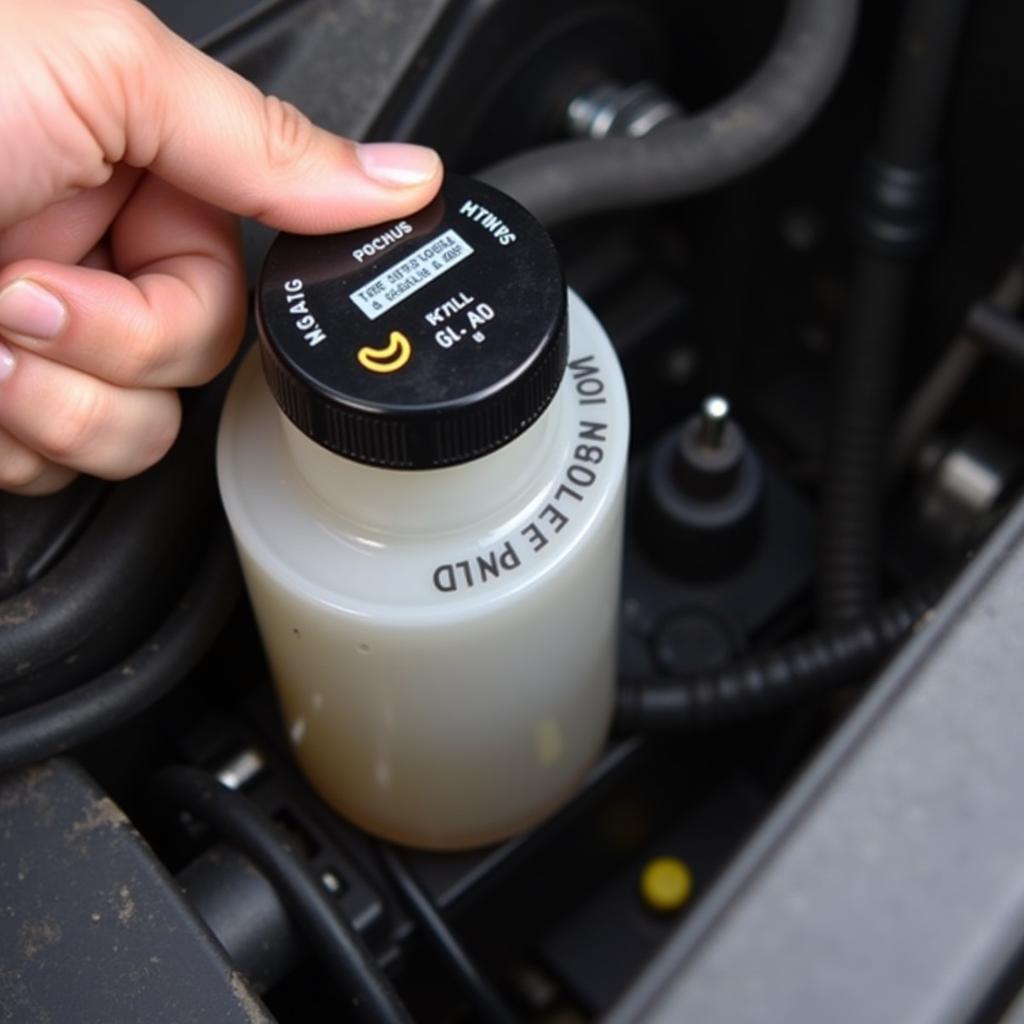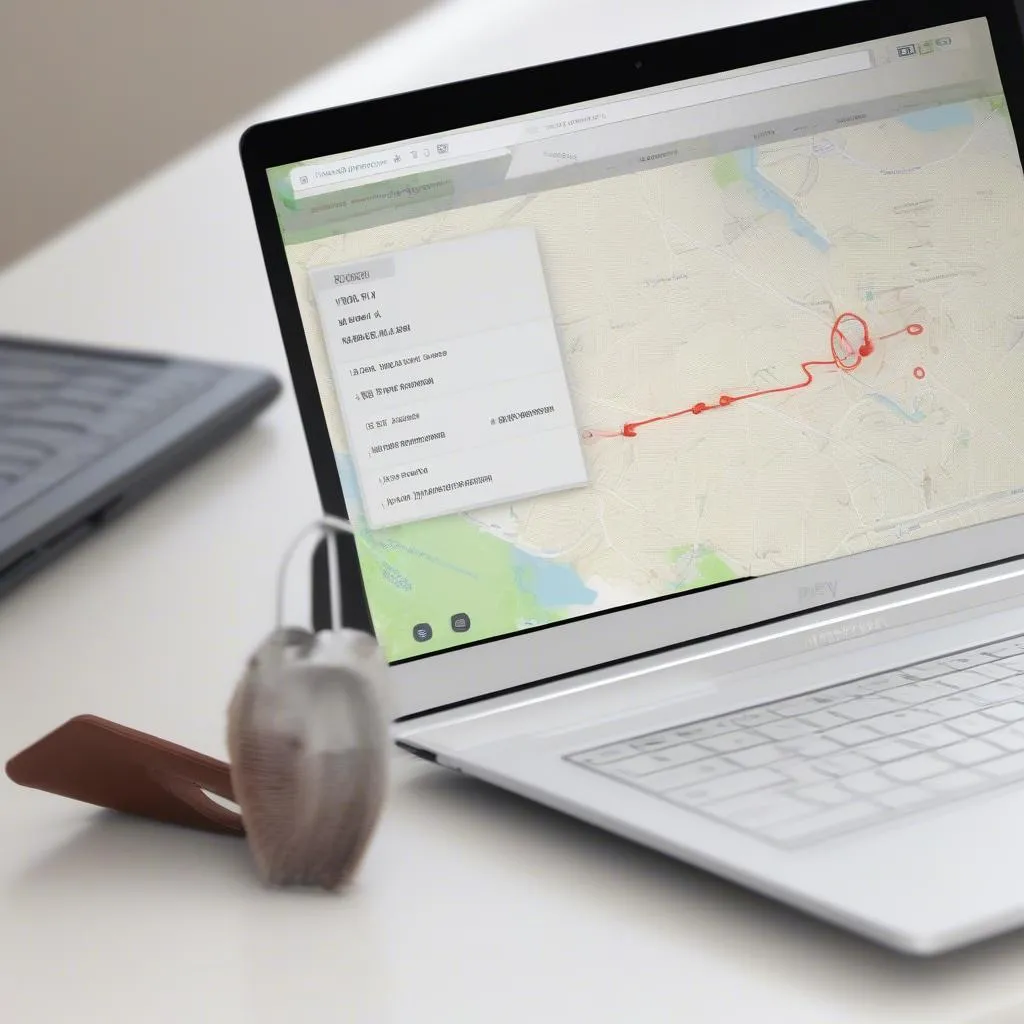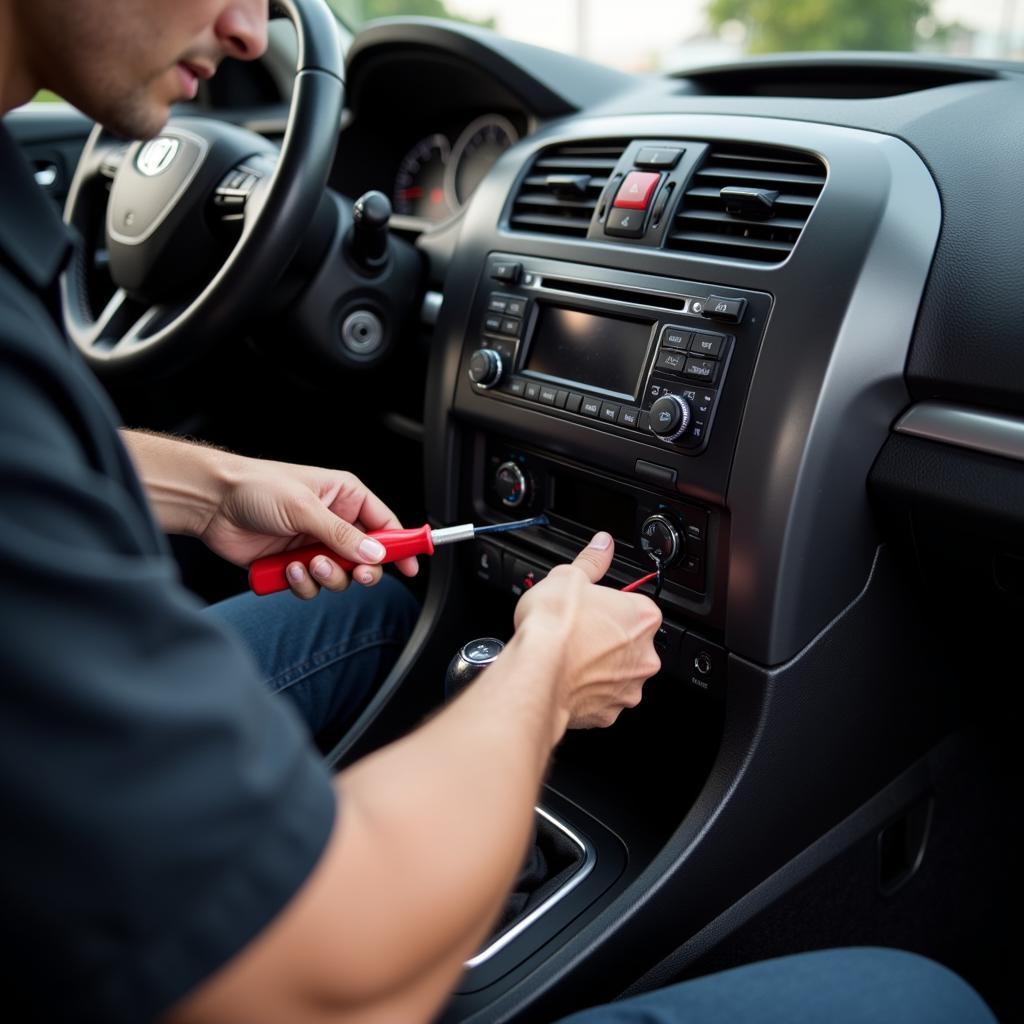The Honda CRV brake system warning light can be a jarring sight. This guide will delve into the common causes, diagnostic procedures, and solutions for when this light illuminates on your dashboard. We’ll cover everything from simple fixes to more complex issues, empowering you to understand and address this crucial safety concern.
 Honda CRV Brake Warning Light Illuminated on Dashboard
Honda CRV Brake Warning Light Illuminated on Dashboard
Understanding Your Honda CRV’s Brake System
The brake system is arguably the most important safety feature in your vehicle. It’s a complex network of components working together to slow and stop your CRV. Understanding the basics of this system is crucial to interpreting the warning light. From the brake pedal to the master cylinder, brake lines, calipers, and rotors, each part plays a vital role. A malfunction in any of these components can trigger the warning light. If you’ve experienced issues like a car not starting after getting a new battery and alternator, the problem might not be related to your brakes at all, but checking the brake system is still a good starting point.
Why is My Honda CRV Brake System Warning Light On?
Several factors can trigger the brake system warning light. One common cause is low brake fluid. This can be due to a leak or simply worn brake pads. A faulty parking brake switch can also illuminate the warning light. More serious issues, such as a malfunctioning ABS (Anti-lock Braking System) module, can also be the culprit. If your check engine light came on after a jump start, it might point to a different electrical issue that may or may not be related to the brakes.
Common Causes of the Brake Warning Light
- Low Brake Fluid: This is the most frequent cause. Check your brake fluid reservoir.
- Worn Brake Pads: Thin brake pads reduce fluid levels.
- Parking Brake Engaged: Make sure the parking brake is fully released.
- ABS Issues: A problem with the ABS module can trigger the light.
- Faulty Brake Light Switch: This can sometimes cause the warning light to illuminate.
 Checking the Brake Fluid Reservoir in a Honda CRV
Checking the Brake Fluid Reservoir in a Honda CRV
Diagnosing the Problem
Diagnosing the issue often starts with a visual inspection. Check the brake fluid level and examine the brake lines for any leaks. If the fluid level is low, topping it off and monitoring it for further drops can help pinpoint a leak. If you suspect a more complex issue, like a problem with the ABS, a diagnostic scan tool can retrieve trouble codes from the vehicle’s computer. If your car still won’t start after installing a new battery, refer to other resources for help with that issue before moving on to the brakes.
What to Do When the Light Comes On
If the brake warning light illuminates, pull over safely as soon as possible and assess the situation. Check your parking brake. If it’s engaged, release it and see if the light goes off. If the light persists, check your brake fluid level. If it’s low, carefully add brake fluid but avoid driving unless absolutely necessary. Seek professional assistance if you notice leaks or suspect a more serious problem. Sometimes a check engine light can appear after jumping a car, and this requires separate diagnosis.
“Regular brake maintenance is essential,” says John Smith, ASE Certified Master Technician. “This includes regular brake fluid flushes and brake pad replacements. Preventing issues is always better than reacting to them.”
Remote Diagnostics and Software Solutions
In some cases, remote diagnostics and software updates can resolve certain brake system issues. These advanced tools can identify and fix software glitches in the ABS module or other electronic components. This can save you time and money compared to traditional repair methods. “Remote diagnostics are becoming increasingly important in modern vehicle repair,” adds Jane Doe, Senior Automotive Engineer. “They allow us to quickly and efficiently address certain software-related problems.”
Conclusion
The Honda CRV brake system warning light is a critical safety indicator. Understanding its potential causes and taking appropriate action can prevent serious accidents and keep your CRV running smoothly. Remember to perform regular brake maintenance and consult a professional if you encounter any persistent or concerning issues with your brake system. Addressing the brake warning light promptly ensures your safety and the longevity of your vehicle. For more insights on dealing with starting problems, check this guide on jumping off a dead car battery.
FAQ
-
What is the most common cause of the Honda CRV brake warning light? Low brake fluid.
-
Can worn brake pads cause the warning light to come on? Yes, worn pads reduce fluid level.
-
Should I drive with the brake warning light on? No, pull over safely and investigate the issue.
-
How often should I check my brake fluid? Check your brake fluid level at least once a month.
-
What should I do if I suspect an ABS problem? Seek professional diagnosis and repair.
-
Can a faulty parking brake switch cause the light to come on? Yes.
-
Can remote diagnostics help fix brake system issues? Yes, in some cases software issues can be addressed remotely.



